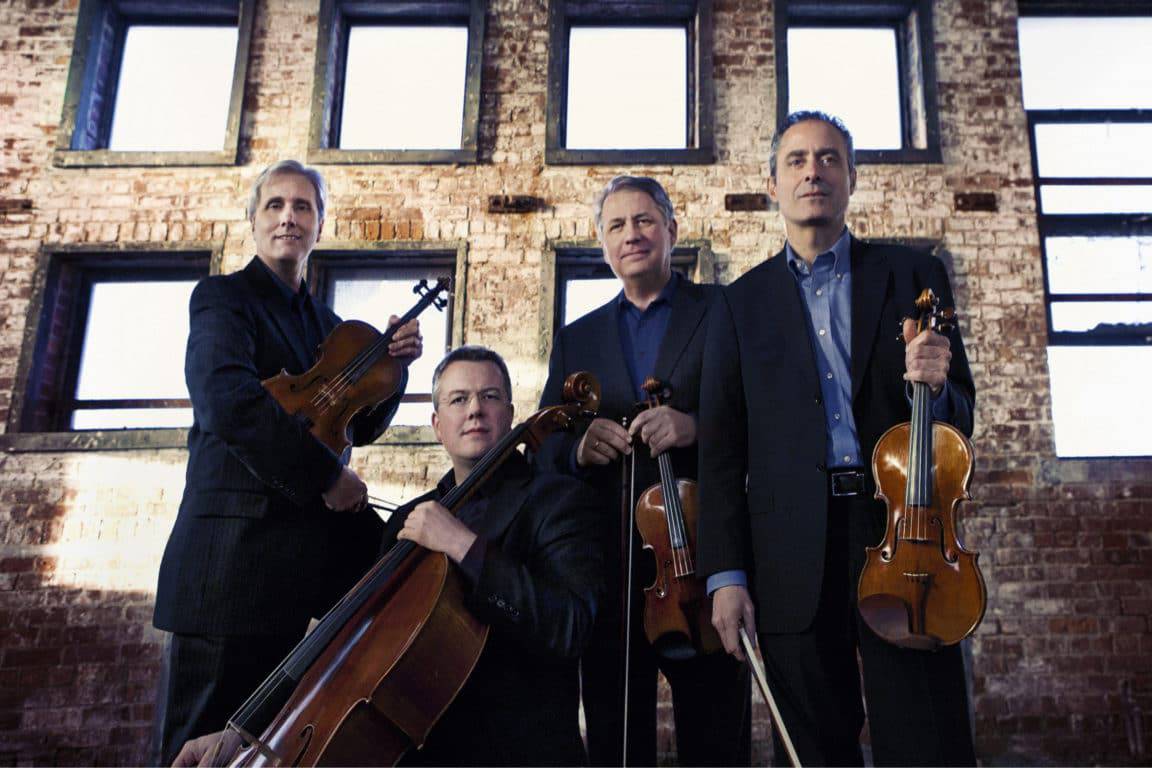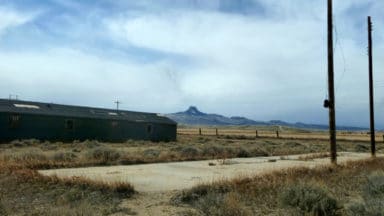Editor’s note: ArtsWatch’s Alice Hardesty conducted this 2010 interview with Eugene Drucker, co-founding violinist of 2017 Chamber Music Northwest Artists in Residence Emerson String Quartet, during the ensemble’s appearance at Chamber Music Northwest in 2010. It’s excerpted from a longer version that originally appeared on the website of Chamber Music Concerts in Ashland, but is no longer available. Drucker performed earlier this month at the festival with the quartet and also played his own original music (discussed below) in a July 7 CMNW concert.
Emerson Origins
AH: Let’s talk about your beginnings as a quartet. How did you four come together?
ED: Philip Setzer and I met while we were students at Juilliard. We met at the orchestra, actually, and decided to form a student quartet together, partly because you had to do that for the chamber music requirement, and it felt congenial on a personal basis because we already knew each other. After all, we had the same role model: our teacher, the great violinist Oscar Shumsky. Meanwhile, we were getting coached by members of the Juilliard Quartet, especially Robert Mann — who I think is a Portland native — and also by Felix Galimir, who had formed the Galimir Quartet, which specialized in 20th century music.
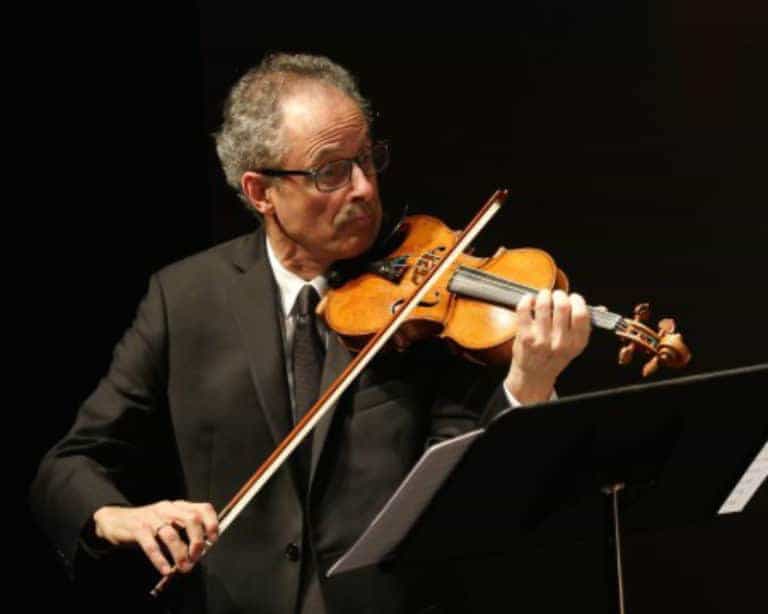
We had various changes of personnel over the first few years, and when we finished school we had to freelance to make a living. But we always had the quartet as a core of our musical experience. Peter Mennin, the president of Juilliard, heard us perform at a church on the East Side. He felt that we had potential and that we should continue to stay together, so during the 1976-1977 season we got a manager and chose a name (we didn’t have a name for the first few years). Since it was the bicentennial year we chose an American name with cultural associations.
AH: And Emerson himself?
ED: Emerson had said some enlightened things about music, but none of us was really an expert in philosophy, so the name was a bit on the arbitrary side. But everyone thinks very highly of Ralph Waldo Emerson, and we knew that he had great influence on the intellectual and cultural life of the United States throughout the 19th century, so it seemed like a good way to celebrate American history.
First and Second
AH: You’re the only quartet I know of, although there must be others, where the violinists trade places between first and second. Why did you decide to do that?
ED: That’s something that Phil and I have been doing since our student days, because we wanted to learn how to play both parts. The demands they impose on the violin are somewhat different, and we wanted to gain those skills. Since we evolved so gradually into a professional group, we never felt that there was any reason to crystallize the roles of first and second violins.
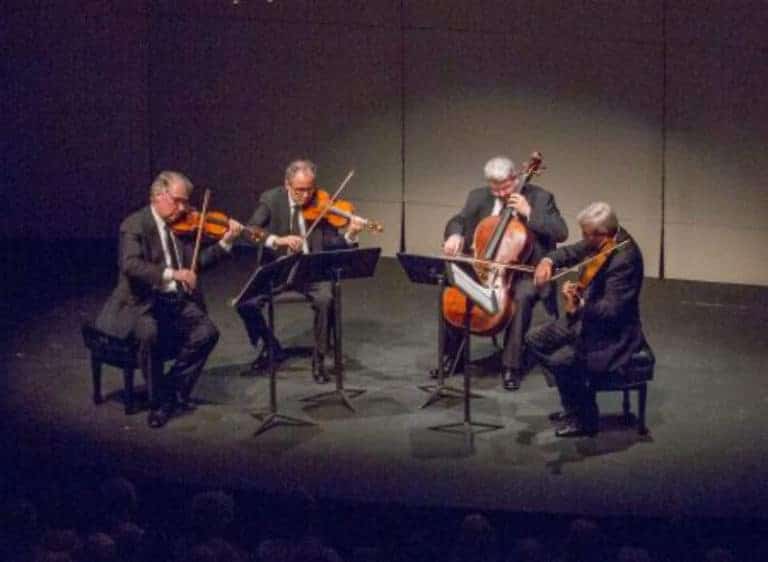
AH: Can you tell me a bit about the characteristics of each because I think a lot of people who enjoy string quartets don’t really understand their respective roles.
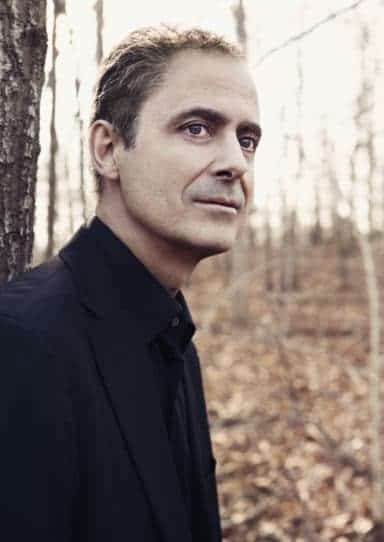
ED: The first violin part is usually more exposed, especially in repertoire like Haydn and Mozart, where there is some integration of melodic material among all the instruments, but the attention is still focused very much on the first violin. Even in later music, where the material might be more equally distributed among all the parts, the first violin is usually the highest part, so it’s going to stand out acoustically. And composers, in conceiving four-part harmony, will give a lot of detail to the top line. It’s a natural way of writing. The first violin will usually give the rhythmic cues when all four instruments are playing together.
Now with the second violin, one of the challenges is that you’re a few feet farther away from the audience and you have to emerge from the texture if you have a solo part. It takes a bit more work. You’re usually in a lower register with regard to your instrument, so it’s a little harder to project the lines. You also have a role of organizing the rhythmic cues for the lower three instruments. The first violin may be playing a long spun melodic line, but the other three instruments may have more rhythmically oriented material and you have to organize that, so then the second violin will be giving cues to the others.
AH: So there are reasons why somebody would choose to play the second violin.
ED: Yes. You might have a darker sound that’s more conducive to that register. You might prefer experiencing the music from the inside. That’s why some people play the viola, why Mozart himself enjoyed playing the viola — because he could experience the texture and harmonies of the music from the inside.
Novel Experience
AH: I’ve read your book, by the way, and I found it very interesting, powerful, and, well, depressing. [Note: Eugene Drucker is the author of a novel that takes place during the Holocaust, The Savior published by Simon and Schuster.]
ED: Yes, it’s hard for me to say to anybody when they buy the book and I autograph it, “I hope you enjoy the book.”
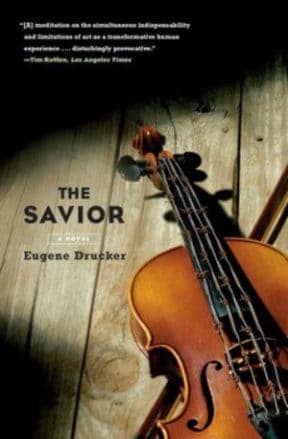
AH: I suppose you could say, “I hope you find the book interesting.”
ED: Or I usually say I hope the book resonates for you, or something like that, in keeping with the musical metaphors.
AH: After you wrote it and had to go through all of that, did it have any effect on your perception of German music, both old and modern.
ED: You know, 75 percent of the music I play is German music. I’ve been involved with that world since my earliest studies. What it might have had an effect on is my performance of the Bach Chaconne, partly for very practical reasons, that in promoting the book I’ve done 25-30 readings in various parts of the U.S. in which I play the Sarabande and Chaconne and then read passages from the book that describe that music. So my interpretation of those movements would have to evolve, or at least I hope it would, through sheer repetition and practicing for each event. I usually give an introductory speech about why I wrote the book and what the basic story is about. Otherwise it would be difficult for people to understand, if I read some of the most extreme passages from the book out of context.
AH: Do you tell in your lecture why you chose the Chaconne?
ED: The answer is very practical. There isn’t a huge amount of repertoire for unaccompanied violin, and the violinist in the novel had to play a number of works by Bach. The Chaconne has risen above the context for which it was written — that Partita — and is a work that has attracted a great deal of attention because other composers have transcribed it, usually for piano. Brahms did a piano left-hand transcription, and even though it is a highly instrumental work, as opposed to the Art of the Fugue, there is a kind of universality about it that does seem to transcend both the instrument and the context of that set of six sonatas and partitas that Bach wrote for solo violin. The Chaconne is a work of vast emotional range, and that’s the main reason why I would have chosen it for an emotionally charged novel.
AH: Who is the Savior?
ED: Well, the title has a certain degree of irony in it, if you look at one meaning of the word as a person who saves or rescues other people. Though Keller might have hoped that he could save his listeners, it didn’t work out that way. On the other hand, there’s the Christian meaning of the word Savior, and Keller has a tormented relationship with his own religion, Christianity. Both he and the guard Rudi have an unwilling identification with Judas, the man who betrayed Christ, and so “The Savior” refers more to the idea that something has been denied Keller and Rudi: the idea of salvation.
Certainly there is no easy salvation available to them because of the horrors of what’s going on around them and their participation to a greater or lesser extent. Two interesting footnotes about that. One is that The Savior was not my original choice of title. That was suggested by Simon and Schuster, and it took me a little while to get used to it, although eventually I liked it. I liked the double meaning, and because of that double meaning in English, it became difficult to find an equivalent in German. Those two meanings are separated in German: somebody who saves other people is ein Retter, and the religious connotation of the Savior is translated as der Erlöser. So we bypassed the whole problem, and the copy editor suggested Wintersonate for the title of the book.
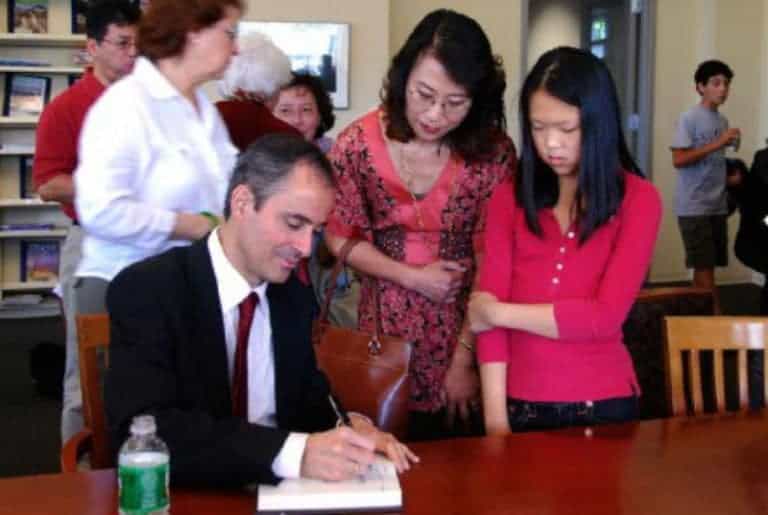
AH: I was wondering if music was the savior, or perhaps Johann Sebastian Bach.
ED: Well, I think that Keller is so intensely involved with music, his whole sense of himself is wrapped up in it and yes, his only chance of achieving a kind of salvation or sublimation of some of his feelings is through music. Rudi has similar feelings about music, which is an intensely charged subject for him. In the end, Rudi is lamenting the fact that German music can never be the same, or so it seems at that desperate dark moment because it’s been dragged through the mud by the Nazis.
Setting Shakespeare
AH: And musically, any interesting projects planned for the future?
ED: Another creative project of mine has been to set to music a few Shakespeare sonnets for baritone and string quartet. They’ve been played and recorded by a young group whom we’ve mentored called the Escher Quartet. I volunteered for this kind of quirky program they have called “Find a Composer.” So I looked in the closet and found myself!
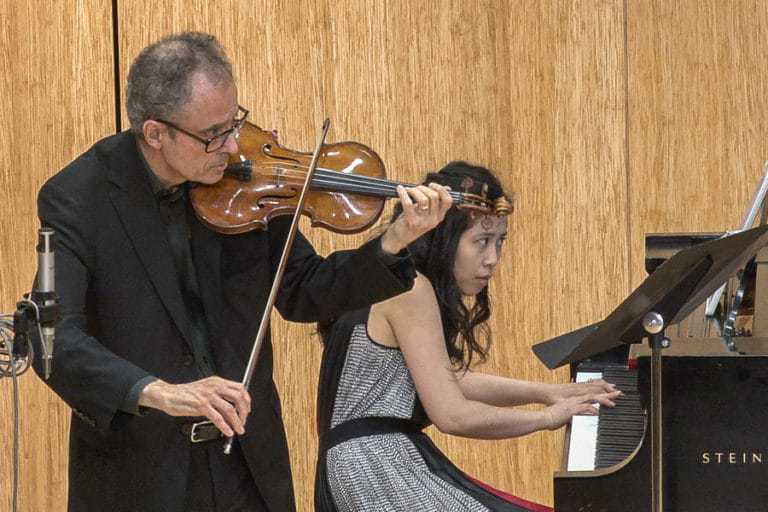
AH: So you had the fun of putting Shakespeare sonnets to music, working the words and music to fit together.
ED: Yes, it’s another much more minor aspect of my combined interest in music and literature. I’ve subsequently added one more sonnet and a soliloquy from the first act of Hamlet: “O that this too, too solid flesh would melt, thaw, and resolve itself into a dew….” And that was a really tough one for me to do. I’ve tried to preserve what I imagine to be the speech rhythms of the text and the intonation of spoken language.
AH: Have you listened to recordings of this spoken material?
ED: I have listened to some recordings, like John Gielgud, which are wonderful, very stylized and different from the way I had imagined it in my head when I was composing it. There are many ways to imagine the words being spoken. Some might depend on your interpretation of the meaning of the text, some on the timing, pacing, or pitch relationships of the different syllables within a line. One thing I noticed was that there should not be, in my opinion, a lot of extreme intervals, because when you’re speaking English or even reciting verse, your voice is not going to go way up and down within a line. I made a few exceptions for reasons of meaning, like this one sonnet about lust, where he uses the word “extreme,” and I have a large interval like a 7th – “exTREME” — like that, so it’s highly intense. But most of the time it’s all within a narrow intervallic compass.
Editor’s note: Drucker later adapted this music into a 14-minute Shakespearean suite for violin and piano, But Then Begins a Journey in my Head, that he performed July 7 with pianist Gloria Chien at Chamber Music Northwest’s New@Noon concert, Violin Variations.
